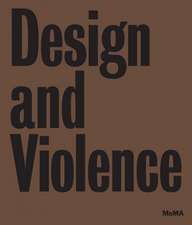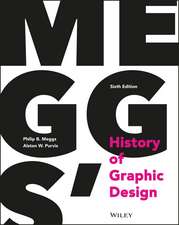Bauhaus Culture: From Weimar To The Cold War
Autor Kathleen James-Chakrabortyen Limba Engleză Paperback – 18 iul 2006
Offering the first comprehensive training in the visual arts grounded in abstraction, the Bauhaus was the site of a dazzling range of influential experiments in painting, architecture, photography, industrial design, and even artistic education itself. Three-quarters of a century later, the “look” of the new remains indebted to the Bauhaus and its equation of technology with modernism. Central to discussions of the relationships between art, industrialization, and politics in the twentieth century, much of the school’s later impact was derived in part from its status as one of the foremost cultural symbols of Germany’s first democracy and its public reputation as a “cathedral of socialism.”
In this book, editor Kathleen James-Chakraborty and seven other scholars analyze the accomplishments and dispel the myths of the Bauhaus, placing it firmly in a historical context from before the formation of the Weimar Republic through Nazi ascendancy and World War II into the cold war. Together, they investigate its professors’ and students’ interactions with mass culture; establish the complexity of its relationship with Wilhelmine, Nazi, and postwar German politics; and challenge the claim that its architects greatly influenced American architecture in the 1930s.
Their most explosive conclusions address the degree to which some aspects of Bauhaus design continued to flourish during the Third Reich before becoming one of the cold war’s most enduring emblems of artistic freedom. In doing so, Bauhaus Culture calls into question the degree to which this influential school should continue to symbolize an uncomplicated relationship between art, modern technology, and progressive politics.
Contributors: Greg Castillo, Juliet Koss, Rose-Carol Washton Long, John V. Maciuika, Wallis Miller, Winifried Nerdinger, Frederic J. Schwartz.
Kathleen James-Chakraborty is associate professor of architecture at the University of California, Berkeley, and author of German Architecture for a Mass Audience and Erich Mendelsohn and the Architecture of German Modernism.
In this book, editor Kathleen James-Chakraborty and seven other scholars analyze the accomplishments and dispel the myths of the Bauhaus, placing it firmly in a historical context from before the formation of the Weimar Republic through Nazi ascendancy and World War II into the cold war. Together, they investigate its professors’ and students’ interactions with mass culture; establish the complexity of its relationship with Wilhelmine, Nazi, and postwar German politics; and challenge the claim that its architects greatly influenced American architecture in the 1930s.
Their most explosive conclusions address the degree to which some aspects of Bauhaus design continued to flourish during the Third Reich before becoming one of the cold war’s most enduring emblems of artistic freedom. In doing so, Bauhaus Culture calls into question the degree to which this influential school should continue to symbolize an uncomplicated relationship between art, modern technology, and progressive politics.
Contributors: Greg Castillo, Juliet Koss, Rose-Carol Washton Long, John V. Maciuika, Wallis Miller, Winifried Nerdinger, Frederic J. Schwartz.
Kathleen James-Chakraborty is associate professor of architecture at the University of California, Berkeley, and author of German Architecture for a Mass Audience and Erich Mendelsohn and the Architecture of German Modernism.
Preț: 226.98 lei
Nou
Puncte Express: 340
Preț estimativ în valută:
43.45€ • 47.21$ • 36.52£
43.45€ • 47.21$ • 36.52£
Carte tipărită la comandă
Livrare economică 21 aprilie-05 mai
Preluare comenzi: 021 569.72.76
Specificații
ISBN-13: 9780816646883
ISBN-10: 0816646880
Pagini: 272
Ilustrații: 57 halftones, 2 line art
Dimensiuni: 178 x 254 x 18 mm
Greutate: 0.57 kg
Ediția:First edition
Editura: University of Minnesota Press
Colecția Univ Of Minnesota Press
ISBN-10: 0816646880
Pagini: 272
Ilustrații: 57 halftones, 2 line art
Dimensiuni: 178 x 254 x 18 mm
Greutate: 0.57 kg
Ediția:First edition
Editura: University of Minnesota Press
Colecția Univ Of Minnesota Press













